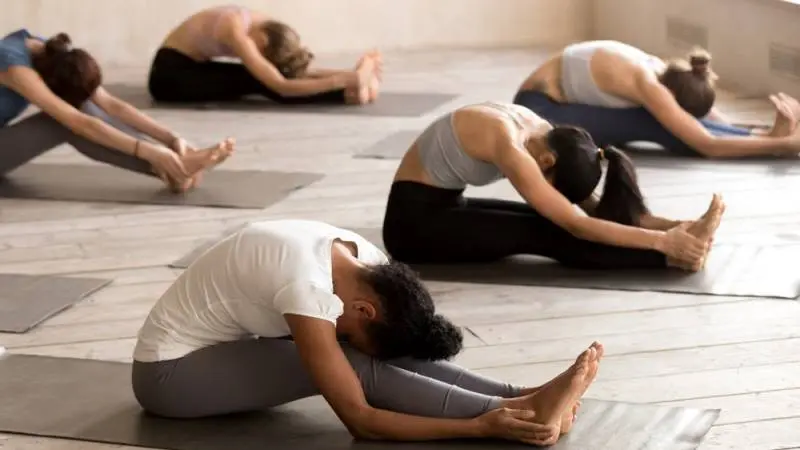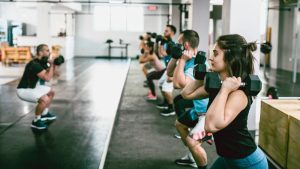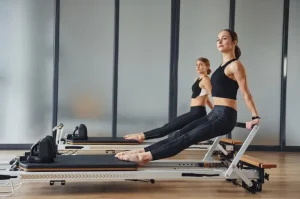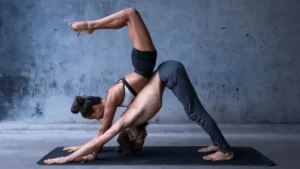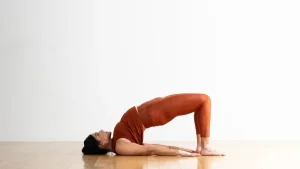Yin Yoga, a gentle and introspective style of yoga, offers a tranquil and meditative approach to practice. It focuses on long-held poses, deep stretching, and cultivating a state of mindfulness and surrender. In contrast to more active and dynamic yoga styles, Yin Yoga targets the connective tissues, promoting relaxation, flexibility, and emotional well-being. In this comprehensive article, we will explore the essence of Yin Yoga, its principles, benefits, and how it can bring balance and serenity to your body, mind, and spirit.
Understanding Yin Yoga
Yin Yoga, developed by Paulie Zink and popularized by teachers such as Paul Grilley and Sarah Powers, draws inspiration from traditional Chinese medicine, Taoist philosophy, and Indian yoga. The practice aims to balance the energetic forces of Yin and Yang within the body. While Yang practices emphasize strength, heat, and dynamic movements, Yin Yoga focuses on stillness, surrender, and holding poses for an extended period.
Key Principles of Yin Yoga
1. Long Holds
Yin Yoga poses are typically held for an extended duration, ranging from 3 to 5 minutes or even longer. This extended time allows the muscles to relax and access the deeper connective tissues, tendons, ligaments, and fascia.
2. Targeting Connective Tissues
Yin Yoga specifically targets the deep connective tissues of the body. By applying gentle and sustained pressure, it stimulates these tissues, promoting flexibility and joint mobility.
3. Finding an Appropriate Edge
Practitioners of Yin Yoga are encouraged to find a sensation of moderate intensity, known as the “edge.” It is a balance between experiencing a gentle stretch and avoiding any sharp or excessive discomfort. This edge may vary from day to day and pose to pose.
4. Stillness and Surrender
Yin Yoga invites practitioners to embrace stillness and surrender to the present moment. By finding a comfortable position and allowing gravity to gently deepen the pose, practitioners can cultivate a sense of deep relaxation and inner tranquility.
5. Mindfulness and Breath Awareness
Yin Yoga emphasizes mindfulness and breath awareness throughout the practice. Practitioners are encouraged to observe sensations, thoughts, and emotions that arise, fostering a deepening of self-awareness and present-moment awareness.
6. Individualized Practice
Yin Yoga is adaptable and accessible to practitioners of all levels. Each individual has unique anatomical differences, and variations or props can be used to support individual needs, ensuring a safe and personalized experience.
The Benefits of Yin Yoga
1. Deep Tissue Release and Increased Flexibility
Yin Yoga targets the connective tissues, promoting deep stretching and release. Holding poses for an extended period helps lengthen and nourish these tissues, enhancing flexibility and joint mobility.
2. Stress Reduction and Relaxation
Yin Yoga promotes deep relaxation and activates the parasympathetic nervous system, inducing a state of calm and reducing stress. The meditative aspects of the practice help to cultivate mindfulness, quiet the mind, and restore balance to the body and mind.
3. Improved Energy Flow and Qi Activation
According to Traditional Chinese Medicine, Yin Yoga stimulates the flow of Qi (vital energy) through the meridian pathways, promoting overall health and well-being. By holding poses, Qi can flow freely, unblocking energy channels and restoring balance.
4. Enhanced Joint Health and Injury Prevention
The gentle stress applied to the joints in Yin Yoga helps stimulate the production of synovial fluid, nourishing and lubricating the joints. This can improve joint health, reduce stiffness, and mitigate the risk of injury.
5. Emotional Release and Mental Clarity
Yin Yoga provides an opportunity for emotional release and introspection. The stillness and extended holds allow space for processing and releasing stored emotions, promoting emotional healing and mental clarity.
6. Balancing Yin and Yang Energies
In a fast-paced and Yang-oriented world, Yin Yoga offers a counterbalance. By incorporating Yin Yoga into our practice, we restore equilibrium, harmonizing the active and passive aspects of our being.
7. Cultivation of Patience and Acceptance
Yin Yoga teaches us patience and acceptance as we hold poses and observe sensations without judgment. This practice extends beyond the mat, allowing us to embrace these qualities in our daily lives.
Yin Yoga Poses
Yin Yoga includes a variety of poses that target different areas of the body. Some common Yin Yoga poses include:
- Butterfly Pose (Baddha Konasana): Opens the hips and stretches the inner thighs and groin.
- Dragon Pose (Low Lunge): Targets the hips and groin, providing a deep hip stretch.
- Caterpillar Pose (Paschimottanasana): Stretches the entire back body, including the spine, hamstrings, and calves.
- Reclining Butterfly Pose (Supta Baddha Konasana): Opens the hips and chest, promoting relaxation and release.
- Supported Bridge Pose: Opens the chest, stretches the front body, and releases tension in the lower back.
- Sphinx Pose: Lengthens the spine, opens the chest, and gently strengthens the back muscles.
Incorporating Yin Yoga into Your Practice
To incorporate Yin Yoga into your practice, consider the following steps:
- Prepare the Space: Create a quiet and peaceful environment to practice Yin Yoga, free from distractions.
- Warm-Up: Begin with a gentle warm-up to prepare the body for Yin poses. This can include gentle movements, such as cat-cow stretches or seated twists.
- Select Yin Poses: Choose a few Yin Yoga poses that target specific areas of the body or address your unique needs and intentions.
- Enter and Hold Poses: Enter each pose mindfully, finding your appropriate edge, and hold the pose for an extended duration. Focus on breath awareness and surrender to the present moment.
- Release and Rest: After releasing each pose, take time to rest in a comfortable position, allowing the body and mind to integrate the effects of the practice.
- Mindful Transitions: Transition between poses mindfully, maintaining the meditative quality of the practice.
- Close the Practice: Close your Yin Yoga practice with a few moments of stillness, reflection, and gratitude.
Conclusion
Yin Yoga offers a serene and transformative practice that encourages stillness, surrender, and deep release. Through its principles of long holds, mindfulness, and targeting the connective tissues, Yin Yoga provides numerous benefits for the body, mind, and spirit. By incorporating Yin Yoga into your practice, you invite balance, tranquility, and self-discovery into your life. Embrace the gentle yet profound practice of Yin Yoga, and allow it to guide you on a journey of deep relaxation, inner harmony, and holistic well-being.
